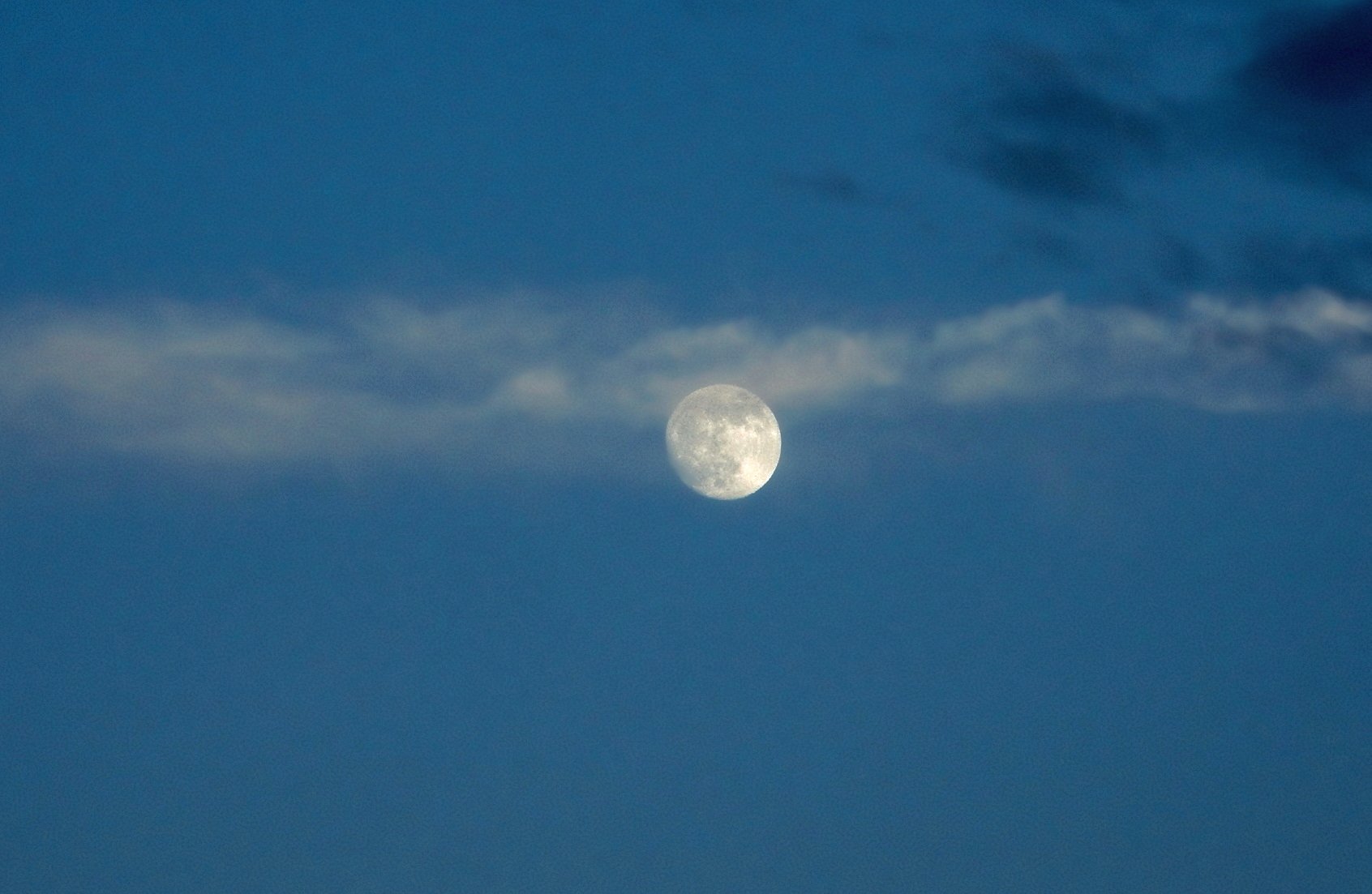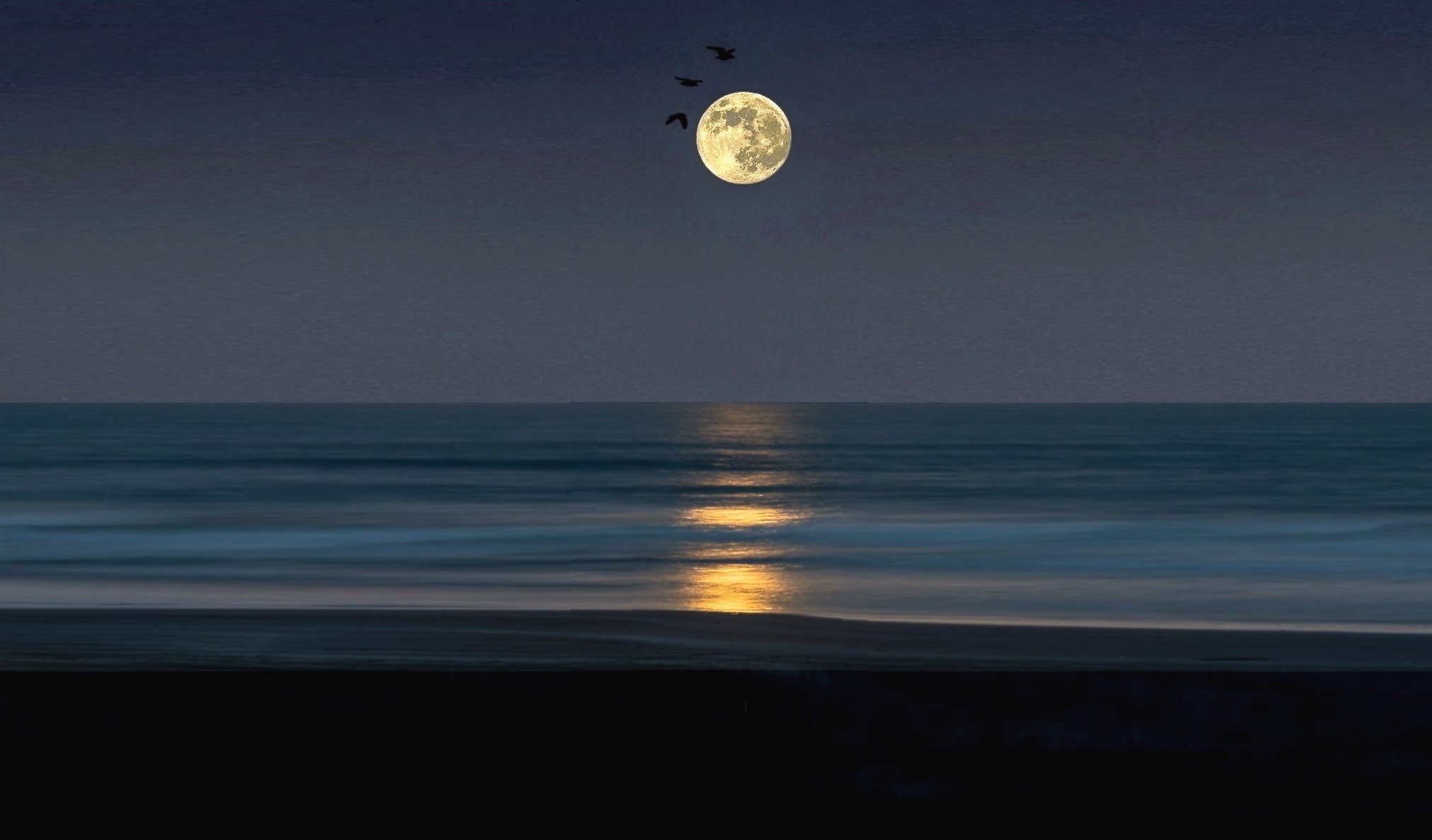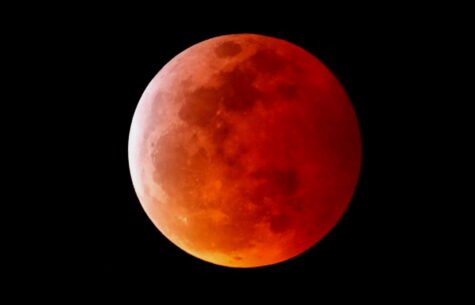
©BobAnderson
By Bob Anderson
There’s no finer place than Fire Island to see the moon rise over the Atlantic’s dark southeastern sky! It’s one of the many natural delights of this island. This summer the moon will be full on July 13, Aug. 11, and Sept. 10, and nearly full on the days immediately before and after. Plus, if it’s a cloudless day it will seem to rise right out of the ocean!
To get a good picture – one that shows some detail in the lunar surface rather than being a washout –head to the beach just before sunset on the day before the full moon. On those days the setting sun will still be high enough to illuminate the foreground, but the moon will have already risen enough to be fully visible low on the horizon. Then virtually any camera or mobile phone will provide nice results. Here’s why.
Because the moon is illuminated by sunlight, to get good detail you need the same exposure as you would use during the day. But that’s not how most mobile phone cameras work, they expose for the foreground subject, which is what you’d usually want them to do. However, if the foreground is dark then it will use a longer exposure time, and the relatively bright moon will show it as a featureless blob. But the day before the full moon, the sun is still up illuminating both the moon and the landscape.
Another exciting way to enjoy moonrise is from a water taxi. From the vantage point of Great South Bay, the moon rises over the island and for a short while seems to just hang above the houses and trees. If you plan to take pictures then schedule your boat ride for the day before the full moon and you’ll get a magnificent view, weather permitting. The same is true from the ferry if you plan to arrive or depart near sunset. And that will let you clearly witness a cool illusion.

©BobAnderson
Have you ever noticed how much bigger the full moon looks just after it rises, when it’s still close to the horizon? Well, you’re not alone. For centuries people have been noticing the moon can look up to 50 percent bigger … it’s a real phenomenon, just not a physical one. And nowhere is this more apparent than Fire Island.
The moon doesn’t change size, of course, so why does it look so much bigger when it’s low on the horizon? Surprisingly, despite centuries of study, there’s no definitive answer. Explanations stretch as far back as the seventh century BC. Ptolemy, for example, thought it must be due to an atmospheric magnification effect, as have many others. But that’s not it … the size at the horizon and at the zenith have been measured by many means, including direct photographic comparison and extremely accurate trigonometric instruments, and it’s always identical.

©BobAnderson
This leads to the inescapable conclusion that it’s strictly a psychological effect, some trick of the human eye-brain system. Beyond that, however, we still don’t know how the illusion arises, but one common element in almost all theories is that there must be some foreground object such as trees, buildings, waves or the horizon line itself. Whatever the cause, it doesn’t detract from the experience of seeing it as it happens! If you’d like to investigate deeper, “The Moon Illusion” (1989, Hershenson) and “The Mystery of the Moon Illusion” (2002, Ross and Plug) are good resources.
Timing is everything here, and because Fire Island is oriented on an east-west axis the exact times of sunset and moonrise vary by a few minutes, but most weather apps will show you the precise times for your exact location. For the Ocean Beach area on July 13 the moon rises in south-east (125°) at 8:55 p.m., on Aug. 11 in the south-east (110°) at 8:14 p.m., and on Sept. 10 almost due east (97°, over the beach itself) at 7:41 p.m. Moonrise times the day before are at 7:55 p.m., 7:32p.m., and 7:15 p.m., respectively, in case you want a nice picture of the family on the beach illuminated by the warm setting sun and with the virtually full moon as a backdrop!



























